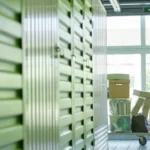Water damage in homes can be a headache for owners, causing major structural problems and health issues if it’s not fixed quickly and correctly. Mold growth is one of the most common and scary effects of water damage. Mold can grow quickly in damp places, which can be bad for your health and damage your property even more. However, homeowners can lower the chance of mold growth after water damage repair from water damage restoration company by taking the right steps to stop it. In this complete guide, we’ll talk about effective ways to keep your home and body safe from mold.
The Threat Of Mold:
Mold is a fungus that grows best when it is damp. It can quickly cover walls, ceilings, rugs, and furniture. Flooding, burst pipes, or leaks can all cause water damage. Mold germs can grow well in the extra water. If you have asthma, allergies, or a weak immune system, mold can be bad for your health. It also leaves behind smells and marks that you don’t like. Mold contact can make it hard to breathe, cause allergic reactions, give you headaches, and make you tired.
Effective Mold Prevention Tips:
Promptly Dry Water-Damaged Areas: Once the water damage has been fixed, make sure that all the affected areas are completely dry as soon as possible. Use dehumidifiers, fans, and ventilation systems to promote air circulation and remove excess moisture. Pay special attention to hidden or hard-to-reach areas such as behind walls, under flooring, and inside cabinets.
Monitor Indoor Humidity Levels: To stop mold from growing, keep the air inside between 30% and 50%. You can use hygrometers to find out how humid different parts of your home are, especially bathrooms, basements, and other places that tend to get wet. If the humidity is too high, you might want to use a dryer to keep things in good shape.
Fix Plumbing Leaks and Moisture Sources: Check your home often for plumbing leaks, roof leaks, and other places where water can get in. Fix any leaks right away to keep water from building up and making the perfect environment for mold to grow. Fix roof leaks, replace broken pipes, and fill in cracks and holes in walls, windows, and doors to keep water out.
Improve Ventilation: In tight spaces like bathrooms, kitchens, and laundry rooms, ventilation is very important to keep mold from growing and water from building up. Put exhaust fans in the kitchen and bathroom to get rid of the extra wetness that comes from cooking, showering, and washing. To keep humid air from building up inside, make sure that dryer vents are properly placed and lead to the outside of the house.
Use Mold-Resistant Materials: When repairing or renovating water-damaged areas, consider using mold-resistant materials such as mold-resistant drywall, paint, and insulation. These things are made to stop mold from growing, so they can help keep your home from getting moldy in the future.
Clean and Maintain Gutters and Downspouts: Water can overflow and seep into the base of your home if your gutters and downspouts are clogged. This can damage the foundation and allow mold to grow. Clean gutters regularly to remove debris such as leaves, twigs, and dirt. Ensure that downspouts are directed away from the foundation and that water drains away from the house.
Inspect and Maintain HVAC Systems: Heating, ventilation, and air conditioning (HVAC) systems can contribute to mold growth if not properly maintained. Inspect HVAC ducts, filters, and coils regularly for signs of mold, dust, and debris. As needed, clean or change air filters, and have your HVAC system serviced by a professional to make sure it works at its best and the air quality inside your home is good.
Remove and Replace Damaged Materials: If things like drywall, insulation, or flooring that have been damaged by water can’t be cleaned and dried properly, they might need to be taken out and replaced to stop mold growth. Get rid of ruined items the right way and make sure that new items are put in the right way to stop water damage from happening again.
Keep Indoor Spaces Clean and Clutter-Free: Regular cleaning and decluttering can help prevent mold growth by reducing the accumulation of dust, dirt, and organic matter where mold spores can thrive. Most of the time, you can clean rugs, furniture, and curtains with a vacuum cleaner that has a HEPA filter. Bugs and mold spores will get caught in this. Do not bring too many plants inside because the dirt can hold mold spores and help mold grow.
Be Vigilant for Signs of Mold: Regularly check your home for mold growth signs like musty smells, mold growth that you can see, water spots, and changes in the color of the walls, ceilings, and floors. If you think there is mold growth or water damage, you should find and fix the source of the problem right away to stop more damage and keep your health safe.
Conclusion:
To protect your home and health, it’s important to stop mold growth after fixing water damage. By using these useful mold prevention tips, people can lower the chance of mold growing and make sure their homes are safe and healthy for them and their families. Mold can grow on your property and cause more damage if you don’t take care of any water damage or moisture problems right away and thoroughly. If you take the right steps to keep mold from growing, you can rest easy knowing that your home is safe from its dangerous effects.









